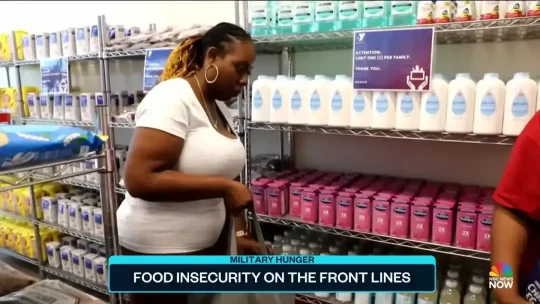Despite serving their country, a shocking number of active-duty US military families are struggling to put food on the table. Twice a week outside Fort Cavazos, one of the largest military bases in the country, families line up for free food distributions where demand consistently overwhelms the supply. This troubling scene highlights a nationwide crisis of food insecurity that persists even in the face of recent military pay raises.
Table of Contents
🥫 The Daily Struggle at Fort Cavazos
At the Armed Services YMCA outside Fort Cavazos (formerly Fort Hood) in Texas, the need is undeniable. Shantel Mloud, whose husband is a Sergeant First Class, relies on these food pantries. Despite her part-time job, their income can’t keep up with the rising cost of living after multiple relocations and raising three children. For Army wives Michelle, Megan, and Crystal, missing a pantry visit means choosing between buying groceries or letting their kids participate in simple childhood activities like swimming.
📊 A Crisis in Numbers
The personal stories are backed by alarming data. The problem of food insecurity within the US military is more widespread than many realize.
- A USDA study revealed that one in four active-duty troops experiences some level of food insecurity.
- This rate is more than double that of the general civilian population.
- Nearly 40% of children attending Department of Defense schools on US bases now qualify for lunch assistance, up from 30% six years ago.
- Local civilian food pantries report that military families now make up 20-25% of their clients, a dramatic increase from less than 5% in 2017.
💸 The Financial Squeeze on Military Spouses
A key factor driving this crisis is the skyrocketing cost of living, especially for childcare. Dorino Cam of the Armed Services YMCA notes that with infant care exceeding $2,800 a month in some areas, many military spouses are forced to stay home. This leaves the family reliant on a single income that is often no longer enough to cover basic necessities, turning what should be a stable career into a financially precarious one.
🤔 A Question of National Priorities
This situation raises difficult questions about military spending. Critics point to events like a $40 million military parade as examples of funds that could be better used to ensure enlisted personnel earn a living wage. While such events may boost recruitment, they stand in stark contrast to the daily reality of soldiers’ families needing food assistance. As Shantel Mloud’s husband prepares for retirement, she reflects on the promise of service: the expectation that if you dedicate your life and take risks for your country, your family will, at the very least, be taken care of.
- South Park Episode Under Fire After Assassination of Charlie Kirk
- Emmys 2025 Recap: ‘The Pitt’ and ‘The Studio’ Win Big as Newcomers
- Mike Tyson Kicks Mr. Beast at Charity Gala: Eyewitnesses Detail Shocking Altercation
- The Complete Winners List for the 77th Emmy Awards (2025)
- ‘The Pitt’ and ‘Severance’ Dominate a Night of Thrilling Upsets at the 77th Emmy Awards
- NFL Week 2 Live: Joe Burrow Injured, Cowboys Rally Against Giants in Hectic Early Slate
- Seattle Seahawks vs. Pittsburgh Steelers: Week 2 Game Day Preview
